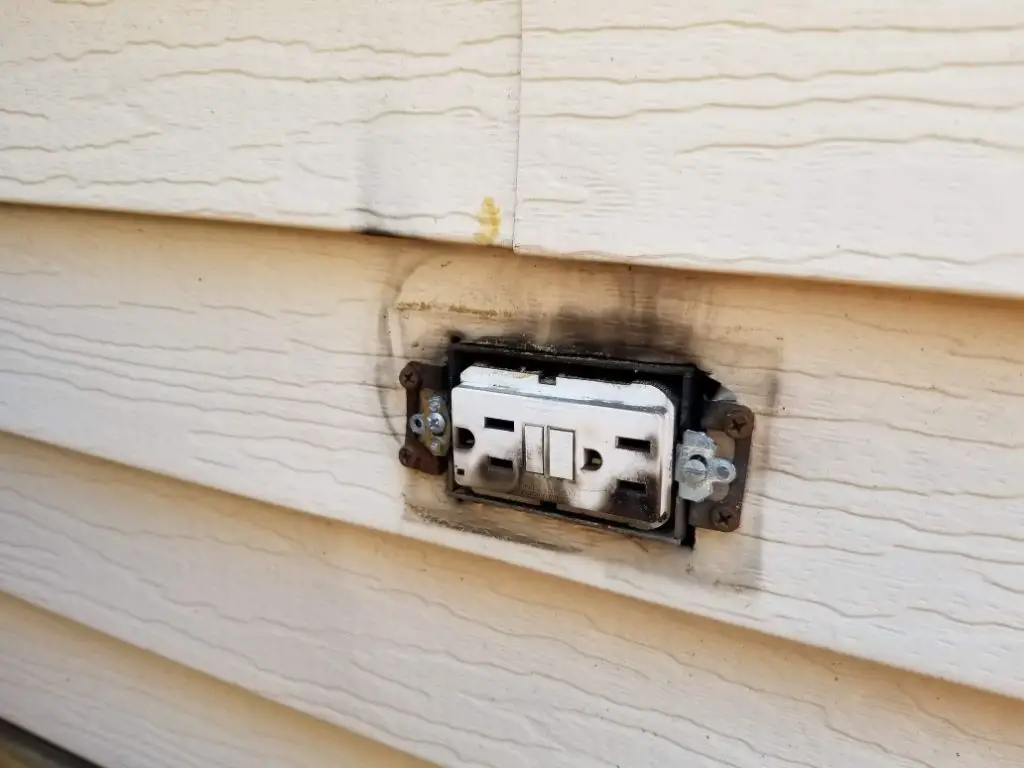Ground fault circuit interrupters (GFCIs) are important safety devices found in many outdoor electrical outlets. An outdoor GFCI that is malfunctioning can pose a serious shock hazard. Knowing the signs of a bad outdoor GFCI can help you identify when replacement is needed.
Page Contents
What is a GFCI?
A GFCI, or ground fault circuit interrupter, is a fast-acting circuit breaker designed to shut off electric power in the event of a ground fault. A ground fault occurs when electricity flows along an unintended path, such as through water or a person’s body. GFCIs work by constantly monitoring the flow of electricity in a circuit. If they detect a difference in current flow between the hot and neutral conductors, they quickly (within a fraction of a second) cut power to prevent electrocution.
Outdoor GFCIs are designed for use in wet areas and are an important safety device. The National Electrical Code requires GFCIs in outdoor outlets in residential, commercial and industrial settings. They help prevent shocks and electrocutions that could occur if an electrical device immersed in water electrifies the water.
Signs Your Outdoor GFCI May Be Bad
Outdoor GFCIs, like all electrical equipment, can wear out over time. There are several signs that may indicate it’s time to replace your outdoor GFCI:
- Frequent tripping – If your outdoor GFCI is tripping frequently, even when nothing is plugged into the outlet, this likely means it is nearing the end of its lifespan.
- Failing the self-test – Most GFCIs have a “test” button that you can press to trigger the device and confirm it’s working properly. If pressing test fails to trip the GFCI, this indicates a problem.
- No power – If the outlet is completely dead and resetting the GFCI doesn’t restore power, the device may be damaged or faulty.
- Unusual sounds or smells – Crackling, buzzing or burning smells coming from the GFCI could mean an electrical issue.
- Scorch marks or burns – Discoloration or melted spots point to overheating, a serious fire hazard.
- Loose receptacle – If the outlet is wobbly or loosely mounted, connections may be compromised.
- Damaged casing – Cracks or damage to the weatherproof housing can allow moisture to reach the wiring.
Any of these signs means it’s time to replace the GFCI. Malfunctioning or damaged GFCIs will not provide proper protection from shocks and electrocution.
Testing an Outdoor GFCI
To confirm a faulty outdoor GFCI, you’ll need to test it. Here is the process:
- Unplug any devices connected to the outlet.
- Press the “TEST” button on the GFCI. This should trip the device and cut power to the outlet.
- Press the “RESET” button. This should restore power to the outlet.
- Plug a lamp or other appliance into the outlet and turn it on. Verify it has power.
- Press TEST again. The appliance should lose power when you press it. If not, the GFCI has failed the test.
- Press RESET again to restore power.
If the GFCI trips when pressed and cuts power to the outlet, it is working normally. Failure to trip or interrupting power means the device is faulty and should be replaced.
How to Replace an Outdoor GFCI
Here are the steps to safely replace an outdoor GFCI receptacle:
- Turn off power to the circuit at the main circuit breaker panel.
- Unscrew and remove the weatherproof cover plate from the GFCI.
- Remove the mounting screws holding the GFCI in place and pull it out of the electrical box.
- Disconnect the wires, taking note of where each one was connected.
- Connect the wires to the matching terminals on the new GFCI using proper wire splicing techniques.
- Mount the new GFCI securely into the electrical box.
- Reinstall the weatherproof cover.
- Restore power at the circuit breaker.
- Test the new GFCI by pressing TEST and RESET.
Important: Make sure to match the amperage and voltage ratings of the new GFCI to the previous one. Outdoor GFCIs should be weather-resistant and UL-listed for safety.
Preventing Trips and Extending GFCI Lifespan
You can maximize the life of your outdoor GFCI and minimize nuisance tripping by following these tips:
- Mount it somewhere dry and protected – Exposure to moisture, dirt and extreme temperatures will accelerate wear.
- Test it monthly – Regular testing confirms it’s working properly.
- Don’t overload it – Plugging in too many appliances can cause overheating and tripping.
- Use a weatherproof cover – The cover shields components from the elements.
- Keep it clean – Use compressed air to clear any debris or dust.
- Shut off power before testing – Cutting power first prevents damage from test button.
- Hire an electrician for replacement – If DIY replacement seems complicated, call a pro.
Adhering to GFCI manufacturer instructions for installation and maintenance can also extend its lifespan.
Conclusion
Checking for signs of frequent tripping, failure to trip when tested, lack of power, damage or unusual sounds/smells can help identify a faulty outdoor GFCI in need of replacement. With a simple tester and following proper safety procedures, a defective GFCI can be replaced with a new UL-listed model that will continue providing important shock protection for many years.
